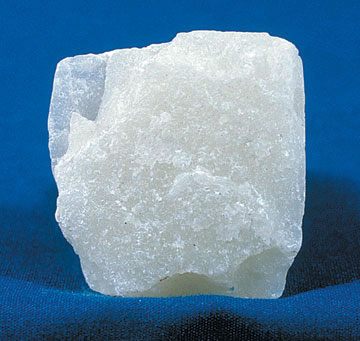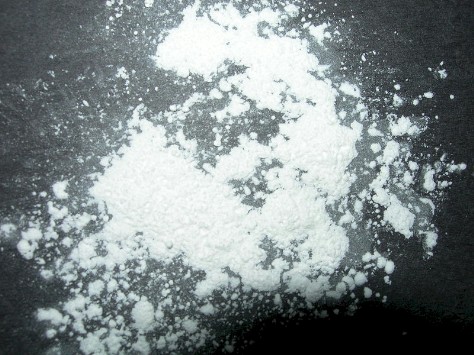Nahita2013
Main menu
- Ana Sayfa
- Türkçe
- English
- Français
- Russian
Talc
TALC
Talc is a mineral composed of hydrated magnesium silicate with the chemical formula H2Mg3(SiO3)4 or Mg3Si4O10(OH)2. In loose form, it is the widely used substance known as talcum powder. It occurs as foliated to fibrous masses, and in an exceptionally rare crystal form. It has a perfect basal cleavage, and the folia are non-
Soapstone is a metamorphic rock composed predominantly of talc.
Formation
Talc is a metamorphic mineral resulting from the metamorphism of magnesian minerals such as serpentine, pyroxene, amphibole, olivine, in the presence of carbon dioxide and water. This is known as talc carbonation or steatization and produces a suite of rocks known as talc carbonates.
Talc is primarily formed via hydration and carbonation via the following reaction;
serpentine + carbon dioxide → talc + magnesite + water
2 Mg3Si2O5(OH)4 + 3CO2 → Mg3Si4O10(OH)2 + 3 MgCO3 + 3 H2O
Talc can also be formed via a reaction between dolomite and silica, which is typical of skarnification of dolomites via silica-
dolomite + silica + water → talc + calcite + carbon dioxide
3 CaMg(CO3)2 + 4 SiO2 + H2O → Mg3Si4O10(OH)2 + 3 CaCO3 + 3 CO2
Talc can also be formed from magnesian chlorite and quartz in blueschist and eclogite metamorphism via the following metamorphic reaction:
chlorite + quartz → kyanite + talc + water
In this reaction, the ratio of talc and kyanite is dependent on aluminium content with more aluminous rocks favoring production of kyanite. This is typically associated with high-
Talc is a tri-
Uses of Talc
Talc is used in many industries such as paper making, plastic, paint and coatings, rubber, food, electric cable, pharmaceuticals, cosmetics, ceramics, etc. A coarse grayish-
Talc is also used as food additive or in pharmaceutical products as a glidant. In medicine talc is used as a pleurodesis agent to prevent recurrent pleural effusion or pneumothorax. In the European Union the additive number is E553b.
Talc is widely used in the ceramics industry in both bodies and glazes. In low-

